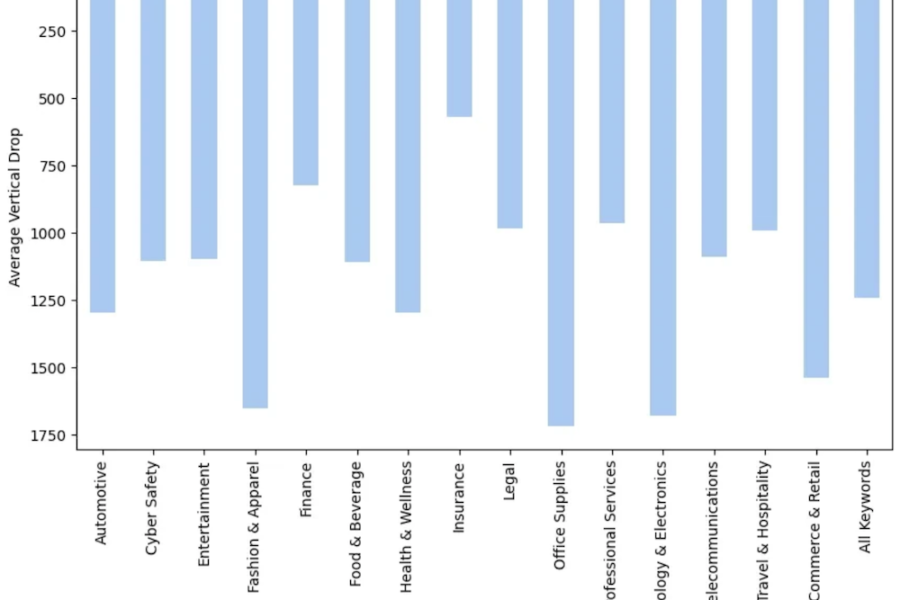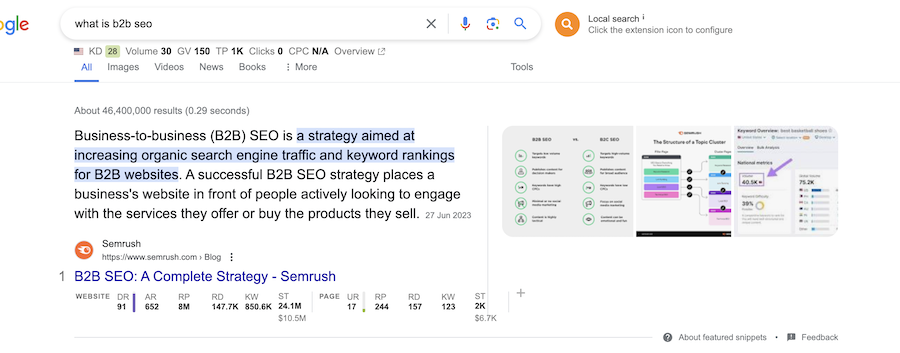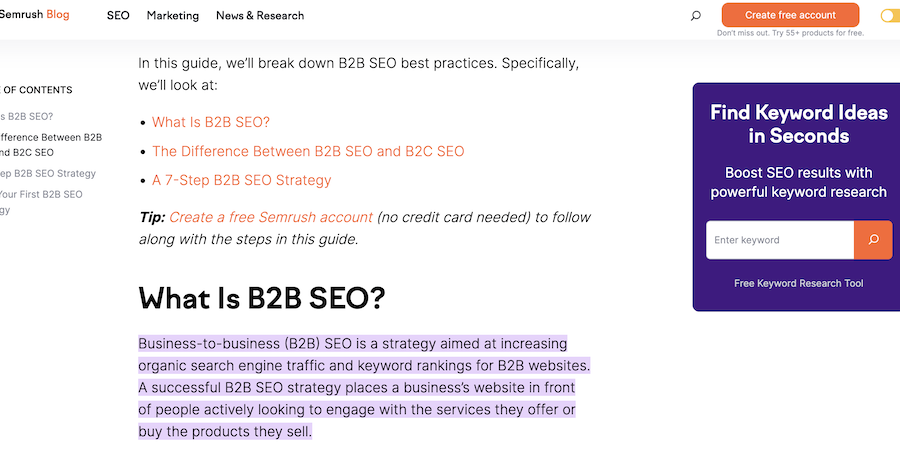Is SEO Dead – Has AI Finally Killed SEO?
Alastair Kane Search Marketing, Search Marketing PartnerRead it in 12 minutes
Read it in 12 minutes
Table of contents
SEO has been pronounced dead more times than Keith Richards.
The graph below, which is taken from Google Trends, represents searches for the term SEO is dead over the past 20 years.

Source Google Trends
Notice the spikes around 2011/12 which coincide with the Google Panda and Penguin updates.
There have also been spikes around 2014, 2016, 2020 and more recently 2023 onwards – after the rise of ChatGPT.
I see countless SEO is dead posts in my Linkedin feed. It’s a great marketing ploy used to generate awareness on social media – cobble together a half baked argument as to why SEO is dead and watch the comments and likes roll in.
What people really mean when they pronounce the death of SEO is that tactics have changed.
SEO is evolving.
As long as search engines exist there will be a need for SEO.
AI’s relevance to SEO isn’t a new phenomenon and was important way before ChatGPT arrived on the scene.
As far back as 2001, Google was using machine learning to incorporate misspellings into the search algorithm. Before the introduction of ML, a simple spelling error would likely lead to an erroneous result and users would need to retype their query.
RankBrain in 2015 was a giant leap forward for Google and AI. It gave the search engine the ability to relate words to concepts by learning how users interact with search results and using this information to improve subsequent search results – helping Google understand what users are really looking for when they search for something.
BERT and MUM were two further AI developments that came in 2019 and 2021 respectively. Each enhanced Google’s ability to understand language from a more human perspective.
AI Overviews recently went live in the US. AI Overviews (formerly Search Generative Experience – SGE) creates answers to user queries by drawing from the deep well of content on the web.
This the most significant change to SEO since the beginning of Google as it answers search queries with generated content instead of links.

It is still too early to tell whether Google’s new feature will be a success or not. There will probably be teething problems but it looks like this new AI feature is here to stay and will be rolled out globally over the coming weeks and months.
AI will undoubtedly impact SEO because it offers users a new way to search for information. We have come a long way from the ‘10 blue links’ format which hasn’t really existed since the mid 2000s.
Images, Local Search, Featured Snippets and other SERP features have all introduced more choices for the user other than the 10 blue links.
But AI Overviews will move us even further away from link-based search results.
Here are a few ways AI could impact SEO and organic traffic:
A zero click search is one that doesn’t result in a visit to a website. The user is able to have their query answered in the SERP.
Featured Snippets are an example of zero click searches. If you wanted to know a simple question like what is the capital of Honduras a website visit isn’t necessary.
The requested information is sourced from the Knowledge Graph and displayed in the SERP.

Zero click searches have been on the increase since 2016.

One impact of AI search on SEO will be to further increase the proportion of zero click searches as users get answers within an AI overview without the need to visit a website.
Authoritas carried out a study on the impact of Google SGE (now called AI Overviews) on organic traffic and brand visibility. They examined 2900 keywords across a number of different industry categories.
They found that the number 1 organic result was pushed down by an average of 1,243 pixels. This is the equivalent of having to scroll down the distance of your screen height just to get to the first organic result.
How far results get pushed down is dependent on the industry sector, with Office Supplies and Fashion being most affected. Finance and legal are least affected which may indicate that Google isn’t 100% confident in synthesising AI generated results from their data sources.

Source Authoritas
The Authoritas study also found that 62% of SGE (now AI overviews) links came from sources outside of the top 10. Only around 20% were sourced from results within the top 10.
What does this mean for businesses?
On one side website traffic is getting squeezed by Google’s AI overviews leading to less visibility above the fold for brands and an increased likelihood of zero click searches.
But on the plus side, Google is sourcing from outside the top 10 meaning there is a chance for less authoritative websites to win a piece of the AI overview pie.
I think this is an interesting finding.
There is a lot of talk these days regarding Google results getting worse due to a deluge of SEO webspam.
The fact that Google is sourcing 62% of SGE links from outside of the top 10 could be an admission that their current search algorithm isn’t doing a great job of rewarding well researched, high quality content.
People don’t want to wade through 5000 words of content designed for search engines to find the answer to a basic question.
Google already highlights text on a page to help users find the snippet of information they are looking for.


Continuing to follow a strategy of targeting informational terms that can be answered by AI is a lost cause in the new search paradigm.
This ‘What is..’ type of content that targets high volume informational terms can be easily produced by AI writing tools.
There is already a deluge of insipid, AI-scaled content polluting the internet. I feel that competing in this scaling frenzy is a race to the bottom and will ultimately damage visibility and brand credibility.
My advice to B2B businesses – go where AI content creation tools are unable to be effective – create helpful middle funnel content that demonstrates expertise (E.E.A.T) and is infused with your brand’s unique perspective.
Leave the TOFU queries to AI Overviews and focus on higher intent MOFU and BOFU traffic.
The old B2B SEO playbook is in need of a refresh.
A look at the results on page 1 for common B2B informational terms will reveal a menu of content blandness that follows the same ingredients in order to win a place in the coveted no.1 position.
The reason for this is because it has worked well in the past. I too have been guilty of following such a strategy as it enabled my clients to win visibility and relevance for important topics.
AI search will change this because it will effectively ‘steal’ informational traffic. Users want answers to simple questions quickly.
AI perfectly addresses this need.
I think this is a good thing. An SEO purge is coming and the SEO industry has to become hyper-focused on the user.
The purge will force SEOs to:
There are two SEO camps at the moment. One is enthused with the new found ability through AI to scale content. The other camp feels this isn’t a long term solution and subject to pitfalls.
I fall in the latter camp.
Scaling content just because you can is like pigging out at an all you can eat buffet – it’s not necessary and will probably do damage in the long run.
We had the ability to scale content in 2010 with content spinners. It worked for a while back then until the Panda update killed off that tactic.
The SEO purge will root out poor quality, commoditized content (whether Human or AI) sooner or later. Google doesn’t want its results plagued with rubbish content that has no point of view and demonstrates no real expertise.
The recent March 2024 core update was an attempt by Google to start the purge. They claim the update has resulted in 45% less low quality content in the search results.
Only time will tell whether this has been a success.
AI offers users a totally new way of receiving answers to queries. Traffic to websites from search engines will be reduced and keywords will likely become less important than they were previously.
So what should B2B companies be doing to future proof their organic strategy?
In an AI search world, keywords will become less important for two reasons:
Currently 15% of daily Google searches are brand new. This will surely escalate with AI as conversational search rises.
How can you keep track of the almost infinite number of search terms in this environment?
High keyword positions were obviously a good measure of increasing brand visibility and trust. However, with keywords now being a less effective measurement of performance, SEO needs to ‘mature’ and be measured for its impact on brand awareness (and revenue) like other marketing channels.
Figuring out ways to increase brand visibility in the AI Overview will become the main goal of SEO.
Structured data (schema markup) helps search engines to better understand the meaning and context of a webpage.
AI search engines like Google’s AI Overviews and Perplexity, use complex algorithms that feed on vast amounts of data to understand and respond to user queries.
Structured data provides a standardised format for feeding this data into AI models. The clear labelling and organisation of information allows AI search engines to grasp the overall meaning and context of a webpage much more effectively. It then uses this information when synthesising an answer to a user prompt.
Google’s Gemini, which powers AI overviews, sources data from the knowledge graph which relies on structured data.
Implement structured data now to better prepare for the future of search.
Creating pillar page content targeting broad information keywords has been a standard B2B SEO tactic for a long time.
But as AI search will ‘steal’ top funnel visits for a lot of queries, B2B SEO strategy needs to focus on an audience that has already passed through the information gathering stage.
Focusing on the middle could make sense with AI search for the following reasons:
Sales interactions between buyers and suppliers are becoming increasingly digital. As buyers want less contact with sales reps, the need for high quality, mid-funnel content will become more important.
A way to structure middle funnel content on a website to maximise search visibility and help the prospect, is to create what I call Product Clusters.
This is an evolution of the traditional topic cluster model but the central page is the product page.
The spoke pages, or sub-pages, will contain MOFU content that addresses every conceivable question a mid-funnel prospect might have about the product before making a decision to purchase.
Think of this content like an experienced sales person in a shop that is able to answer all your questions about the latest iPhone you’re considering buying.
You will have all sorts of questions about the phone’s features you’d want answers to before parting with your hard earned cash.
Some examples of MOFU content includes:

The traffic to these pages will be high intent and linking them to the product page will channel link equity and provide a visibility boost to the product page.
Search engines need to evolve in order to best serve their users, who now demand a far more sophisticated experience than they did in the early 2000s.
In order to facilitate this evolution, Google, and other search engines, frequently tweak their algorithms in the form of updates, which often unsettle SEOs when they are released. Some updates cause more disruption than others, but they all have one goal in mind – to ensure search results remain relevant and helpful for the user.
The introduction of AI in search is essentially another way search engines can improve, by offering quick answers to queries. It doesn’t mean that SEO is dead – people are still using search engines after all. It just means that tactics need to be changed in line with how search has changed.
Long live SEO!
If you’re looking for an SEO consultant that ‘gets’ B2B schedule a call here.
Sign up to receive B2B Search Marketing Insights direct to your inbox
Book a call to discuss your business' search marketing needs
Book a call